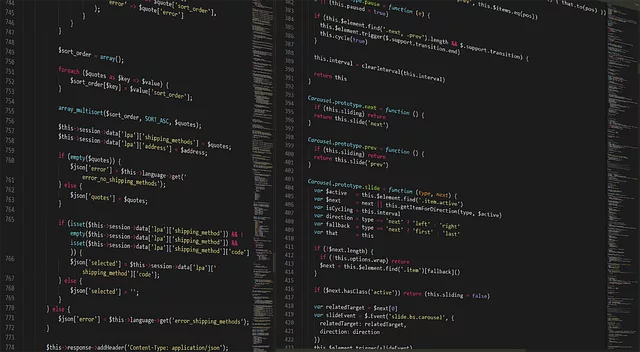Responsive website development in Toledo leverages front-end and back-end expertise to create adaptive, user-friendly platforms. Front-end developers craft visually appealing interfaces with CSS, JavaScript, and HTML while back-end developers build robust server infrastructure. Techniques include media queries, flexible layouts, Bootstrap, and Tailwind CSS for optimal device display. This approach ensures fast loading times, seamless navigation, and enhanced accessibility across all devices, boosting customer satisfaction and conversions for Toledo businesses.
In today’s digital era, ensuring your website looks impeccable on every device is non-negotiable. Responsive website development, a dynamic approach, adapts content and design to any screen size, enhancing user experience across desktops, tablets, and smartphones. This comprehensive guide explores the fundamentals of responsive design, delves into the front-end vs back-end interplay, highlights best practices and tools, and showcases its myriad benefits for Toledo’s businesses seeking top-tier website development services.
- Understanding Responsive Website Development: The Basics
- Front-End vs Back-End: Balancing Act for Responsive Design
- Implementing Responsive Techniques: Tools and Best Practices
- Benefits of Responsive Website Development: An Overview for Toledo's Businesses
Understanding Responsive Website Development: The Basics
Responsive website development is a design approach that ensures websites adapt and display optimally on various devices, from desktops to tablets and smartphones. This method has become essential in today’s digital landscape, where users access the internet through multiple screens. By employing flexible layouts, images, and cascading style sheets (CSS), developers create dynamic sites that provide an exceptional user experience regardless of the device used.
At its core, responsive web design involves a seamless fusion of front-end and back-end development. Front-end developers focus on crafting visually appealing interfaces using HTML and CSS while ensuring the site responds to different screen sizes and orientations. Back-end developers, on the other hand, work behind the scenes, implementing server-side logic and database management to deliver content efficiently. Together, these services from web development companies in Toledo, like ours, empower businesses to create versatile online platforms that cater to a diverse user base across multiple devices.
Front-End vs Back-End: Balancing Act for Responsive Design
In the realm of website development services, Toledo and beyond, achieving responsive design is a delicate balancing act between front-end and back-end forces. Front-end development, often highlighted by vibrant, bustling interfaces, ensures that websites adapt gracefully to various devices and screen sizes. It’s about crafting user experiences that dance across desktops, tablets, and mobile phones with equal elegance. Professionals in this field must be adept at CSS, JavaScript, and HTML, using these tools to create flexible layouts and dynamic content that respond to the user’s touch or tap.
However, the back-end development side of the equation is equally crucial. Back-end developers lay the foundation for seamless navigation and data exchange, enabling front-end magic to unfold smoothly. They utilize programming languages like Python, Ruby, PHP, or Node.js to build robust servers, databases, and APIs that power interactive features and content delivery. Balancing these dual aspects demands a deep understanding of how front-end and back-end components interlink, ensuring the website development services delivered are not just visually appealing but also performant, secure, and user-friendly for all Toledo audiences.
Implementing Responsive Techniques: Tools and Best Practices
Implementing Responsive Techniques requires a thoughtful approach, especially for website development services in Toledo that aim to cater to diverse user needs. Front-end development plays a pivotal role here; using CSS media queries and flexible grid layouts ensures your site adapts gracefully across various devices. Developers can leverage powerful tools like Bootstrap or Tailwind CSS for efficient responsive design, offering pre-built components and utilities that streamline the process.
Best practices include conducting thorough device testing, optimizing content for different screen sizes, and prioritizing user experience. Balancing front-end aesthetics with back-end functionality is key; ensuring fast loading times, seamless navigation, and consistent performance across devices solidifies a site’s responsive capabilities.
Benefits of Responsive Website Development: An Overview for Toledo's Businesses
Responsive website development offers a myriad of benefits for businesses in Toledo looking to enhance their online presence. By adopting this approach, local companies can ensure their websites adapt seamlessly to various devices and screen sizes, from desktops to smartphones and tablets. This versatility is crucial in today’s digital landscape where users access the internet through an array of platforms. With a responsive design, businesses can provide a consistent and engaging user experience across all channels.
For Toledo’s businesses, this means increased accessibility and higher customer satisfaction. Front-end development specialists create visually appealing interfaces that load quickly and display optimally on different devices, while back-end developers ensure the website functions efficiently behind the scenes. This collaboration results in robust, user-friendly websites that can capture and retain audience attention, ultimately driving conversions and fostering stronger business growth.


